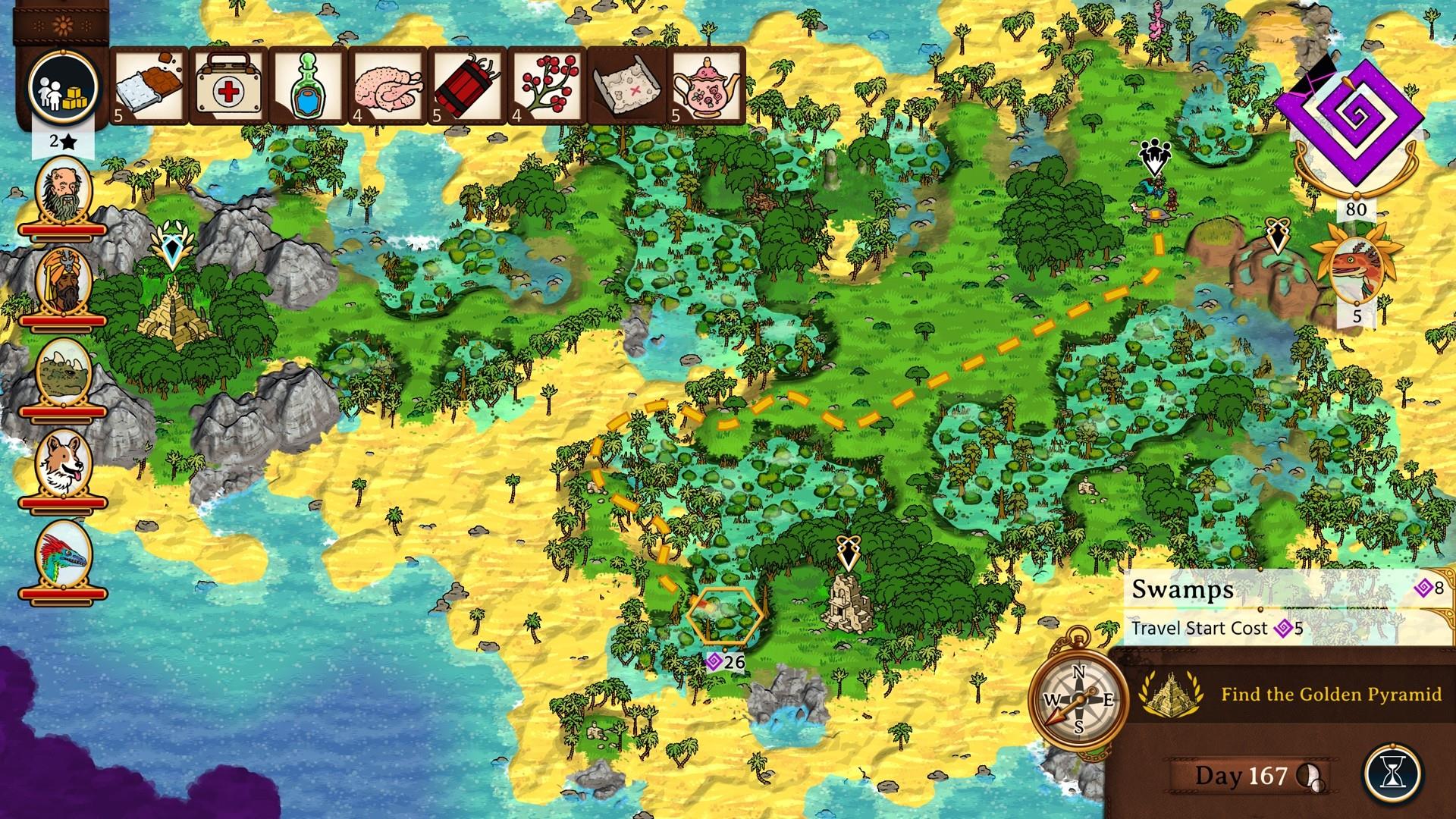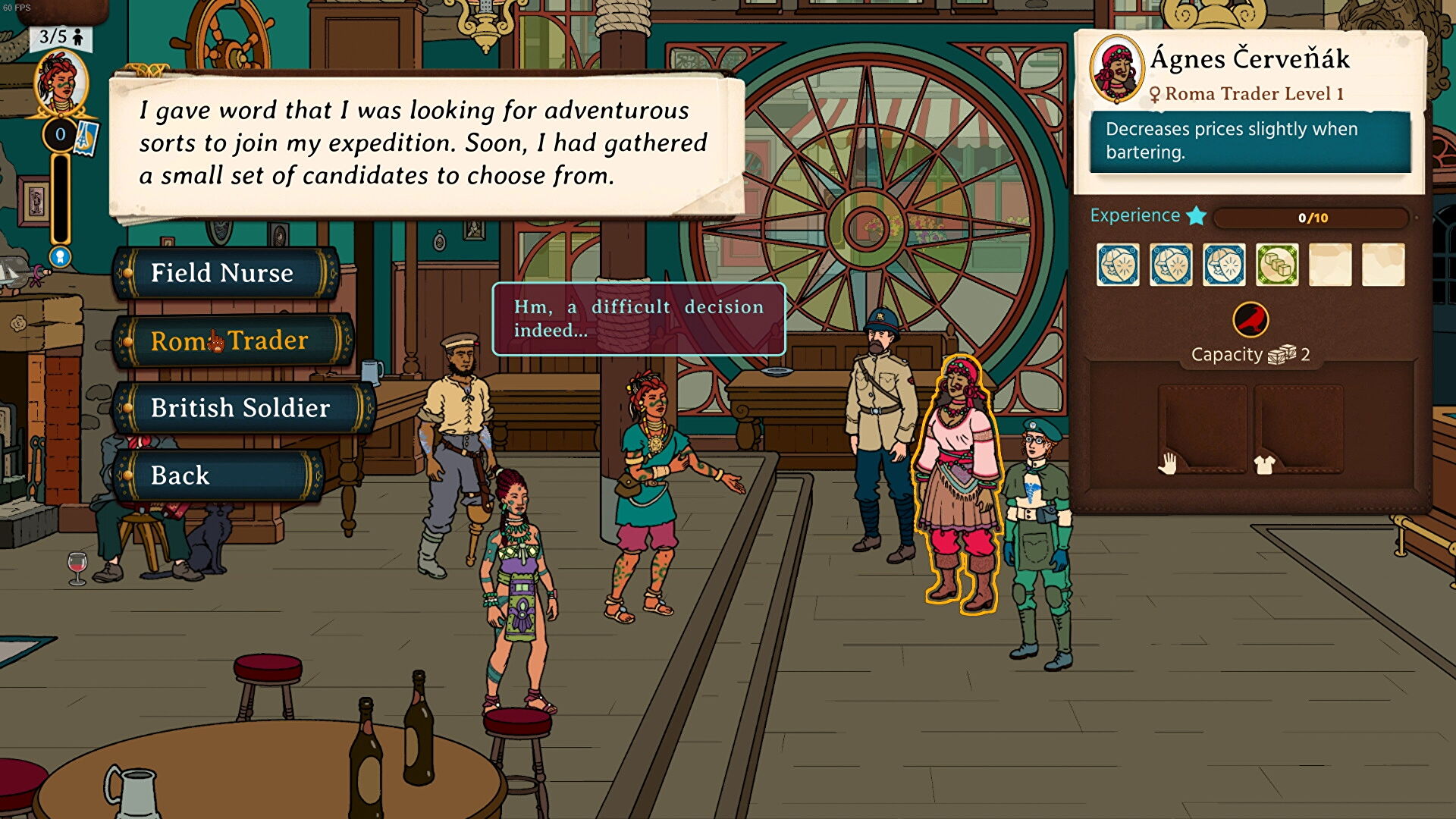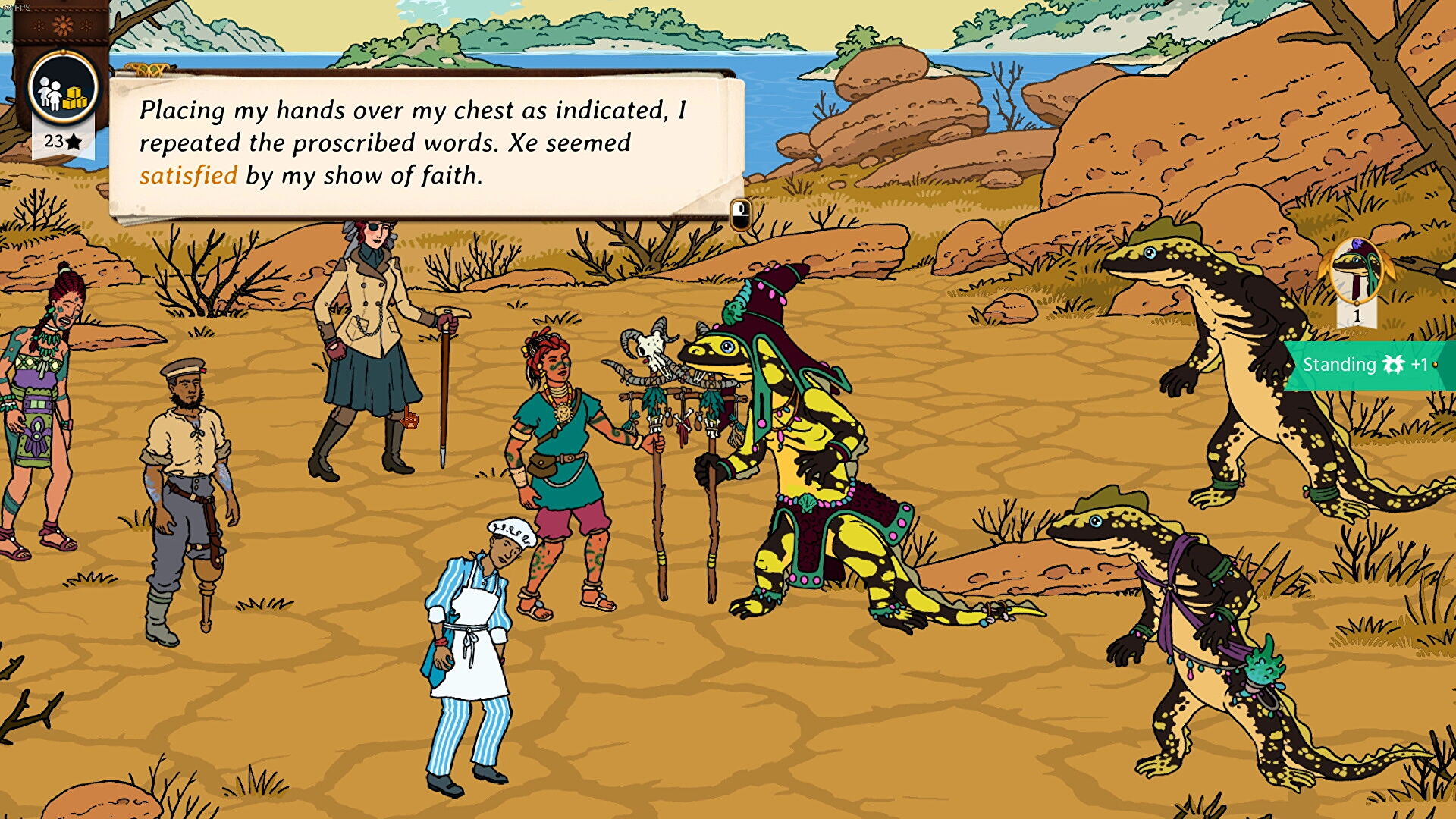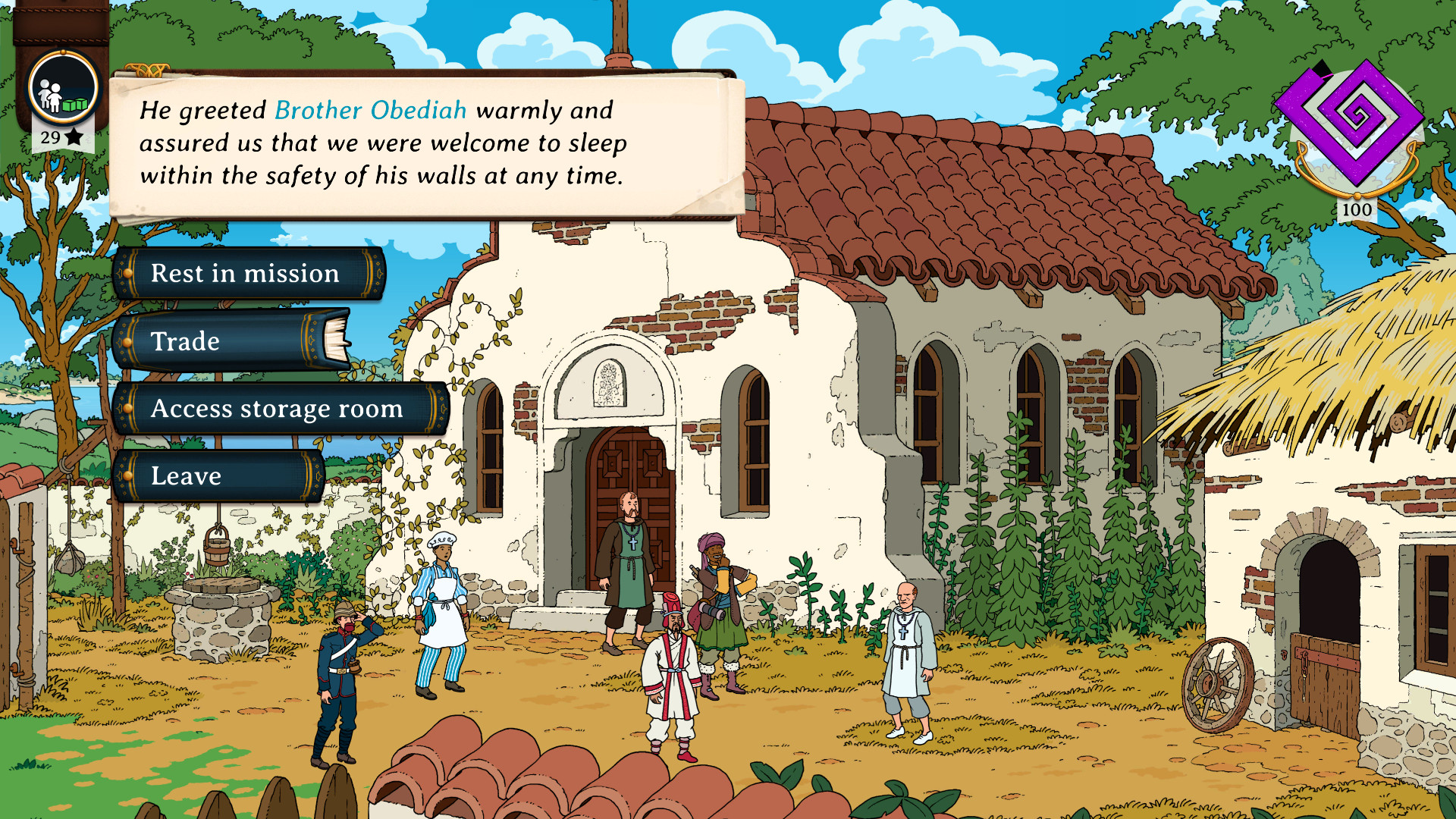Curious Expedition 2 is evolution, not revolution
Whenever I review a sequel or a new piece of DLC for a roguelike, I generally find myself having to refer to the release notes to work out what has changed. A good example of this is the latest Binding of Isaac DLC — which introduces so much new stuff that it is inseparable from the base experience. Where Curious Expedition 2 is concerned however, the biggest change is obvious.
The original Curious Expedition was a fantastic roguelike that I really enjoyed, and with an 8-bit pixel art style, it was fairly charming. Where Curious Expedition 2 offers its biggest change over the original is in the visuals, which are presented in a hand-drawn, cartoon style that somehow captures the same bright feeling of the first game, whilst also enhancing the overall experience significantly.

Visuals aside, Curious Expedition 2 feels a lot like the 2016 original. The concept is an interesting one — it is the late 19th Century and explorers from around the world are rushing to discover the worlds remaining secrets. In the alternate setting presented by both Curious Expedition games, mysterious islands emerge and disappear in clouds of purple fog, whilst alien machinery lies dormant — often protected by native islanders of both human and inhuman form.
Curious Expedition 2 begins with a brief prologue in which the player controls Victoria Malin — a famous explorer from the first game. This opening adventure has the player learning the basic concepts of the game — moving around the island, maintaining sanity (which broadly represents food and general comfort), collecting treasures and meeting the islanders.
What follows this is a more story-focussed experience than the original offered, in which the player will choose their own lead character (and party) and will then head off on adventures. Most years feature two free-form adventures that allow the player to choose from an easy, medium or hard quest in order to reap the associated (and increasing) rewards. The third mission of each year is a story mission, usually centred around what Victoria Malin has been up to whilst we were away.

There is a fair bit of planning before each mission, and choosing which of the three in-game societies will fund your trip is a big deal because it may unlock access to very different items, consumables and even characters. If you think of these societies as Tech Trees which you want to invest in, you wouldn’t be far wrong, although each individual character also has a method of progressing into new skills that is determined by their job.
Selecting provisions and loading water for the journey ahead is extremely important in Curious Expedition 2 and ensuring that you have enough items that increase sanity (or reduce your sanity spend in certain situations) is key. All of the medium and hard difficulty maps will require multiple camp sites and/or sanity boosts to traverse, and doing battle with monsters, natives and other factions will hurt your party, which can also lead to infection and/or further sanity loss — so again healing items are essential.
Once on a map (which may include desert, jungle or cavern biomes to name just the early ones) you’ll discover various locations of interest including native villages, missions, camp sites, monuments and temples and lots, lots more. You’ll feel heavily incentivised to take gold and plunder, but in doing so, you’ll annoy the natives (and you’ll be a bad person) so you may wish to trade instead — either way, you have the choice, but Curious Expedition 2 deals enough uncertainty into its gameplay that you may have to adapt your plans often.

All combat and most puzzles in the game are determined by dice rolls. Different classes, weapons and items add dice with specific faces into the different kinds of challenge — broadly categorised in red (combat), blue (negotiation) and green (exploration) flavours. A tough fighter with a gun, for example, will add lots of red die faces, whilst a translator will add a lot of blue.
For fighting, you’ll mostly want to see red die faces, but for searching, you’ll want green. If you have an abundance of one kind of die or the other, adapting your play style to suit your strengths can help. Being a roguelike, death and permanent consequences are a big part of Curious Expedition 2 and I have had some missions where I’ve barely escaped with my lead character alive — and no one else. This means that she carries some mental scares because people she liked (or loved) were killed due to her decisions.
When this kind of effect happens to multiple characters at the same time, and in particular when the party runs out of sanity, anything can happen. I’ve had adventures that have ended up in cannibalism, and I’ve had characters simply leave. If you can get your reputation to a high enough level with the local natives, they may even assist you to get home safely — which is a significant benefit to weigh against the opposing option, which is to loot as much as you can and leave the natives enraged.

Aside from the graphics though, much of this gameplay was present in the first game, and that’s what made me love it so. I still love Curious Expedition 2 for the same reasons (and because it does genuinely look better) but I don’t quite feel that there are enough gameplay enhancements to consider this a massive leap from the original.
So, if you like the sound of exploring this weird and very well realised world, then there is no doubt that the sequel is strictly better than the original. However, as a point in time and in terms of what it brings to market, Curious Expedition 2 does not feel as significant as it did when Curious Expedition was released.
You can find Curious Expedition 2 on Xbox, Nintendo Switch, PC and Playstation.
Comments are closed.